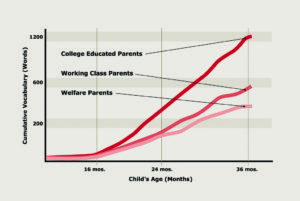Which Segment of Society is the Problem?
What Segment of Society Does AG Exist?
Why is this important?
Narrowing the segment of the population where the problem of achievement gap resides allows resources to be directed at that segment.
Summary
The education gap exists in the impoverished families.
High school students graduating on time by income
Minnesota, 2012-2019
Higher-income students |
2012 |
2013 |
2014 |
2015 |
2016 |
2017 |
2018 |
2019 |
|---|---|---|---|---|---|---|---|---|
Graduation rate |
89.5% |
91.0% |
91.9% |
92.5% |
92.6% |
93.1% |
93.2% |
93.4% |
Number of graduates |
36,528 |
35,863 |
35,076 |
35,143 |
34,714 |
35,075 |
35,484 |
36,116 |
Total potential graduates |
40,807 |
39,431 |
38,158 |
38,007 |
37,502 |
37,661 |
38,090 |
38,679 |
Lower-income students |
2012 |
2013 |
2014 |
2015 |
2016 |
2017 |
2018 |
2019 |
Graduation rate |
62.0% |
65.4% |
66.7% |
68.0% |
69.1% |
69.0% |
70.2% |
71.0% |
Number of graduates |
17,085 |
18,002 |
18,357 |
19,007 |
19,357 |
19,768 |
20,385 |
21,055 |
Total potential graduates |
27,562 |
27,541 |
27,517 |
27,962 |
28,025 |
28,669 |
29,058 |
29,635 |
Minnesota (all) |
2012 |
2013 |
2014 |
2015 |
2016 |
2017 |
2018 |
2019 |
Graduation rate |
78.4% |
80.4% |
81.4% |
82.1% |
82.5% |
82.7% |
83.2% |
83.7% |
Number of graduates |
53,613 |
53,865 |
53,433 |
54,150 |
54,071 |
54,843 |
55,869 |
57,171 |
Total potential graduates |
68,369 |
66,972 |
65,675 |
65,969 |
65,527 |
66,330 |
67,148 |
68,314 |
Research
• “The researchers also found that Hispanic and African-American children benefited most, especially when enrolled in full-day programs. For white children, only those enrolled in half-day programs showed any gains and then only in language skills. When divided by income, the study found that the poorest children gained the most, while children from higher-income households showed no net educational gains.” ( UNIVERSAL PRESCHOOL PROPOSALS IN CONNECTICUT, By Soncia Coleman, Associate Legislative Analyst, August 15, 2006) https://www.cga.ct.gov/2006/rpt/2006-R-0511.htm
• (Hart & Risley, 1995) Meaningful Differences in the Everyday Experience of Young American Children, “This study was one of the first to explicitly link vocabulary size to socioeconomic status rather than to the presence of a language disorder and demonstrated the importance of prior knowledge during assessment and intervention.” (https://www.leadersproject.org/2013/03/17/meaningful-differences-in-the-everyday-experience-of-young-american-children/)
• Lessons from the longest study in human development, Ted Talk by Helen Pearson.
“It is about science on how to best for our children…the biggest message from this remarkable study is this, don’t be born into poverty or disadvantage” the talk goes onto explain how children born into disadvantage struggle with almost every part of life. Key point starts at minute 4.
(https://www.ted.com/talks/helen_pearson_lessons_from_the_longest_study_on_human_development)
Key points start at 4 minutes.
Additional Research that is critical to understand the issues:
This research is a long-term study and is based on children living in poverty.
• “This Perry Preschool Study began in 1962 and included 123 high-risk African-American 3- and 4-year-old children. According to the U.S. Department of Justice, all participants had low socioeconomic status, with low IQ scores, no mental disabilities, and were at high risk of failing school.”
This is a long-term study and is based on children living in poverty.
(http://nieer.org/wp-content/uploads/2014/09/specialsummary_rev2011_02_2.pdf)
This study is referenced often by groups purporting that it supports their position.
• James J. Heckman and Pedro Carneiro, “Human Capital Policy,” working paper, University of Chicago, August 2002.
“We demonstrate the importance of both cognitive and noncognitive skills that are formed early in the life cycle in accounting for racial, ethnic and family background gaps in schooling and other dimensions of socioeconomic success.”
“the Syracuse Preschool Program provided support for disadvantaged children from prenatal care through age 5. Ten years later problems with probation and criminal offenses were 70 percent less among participants compared with a control group.”
(https://www.minneapolisfed.org/publications/fedgazette/early-childhood-development-economic-development-with-a-high-public-return)
“Nor does universal preschool provide a wise public investment. The oft-touted $16 return for every $1 invested in early education applies only to high-quality programs for at-risk children.”
Karen Cadigan was the founding director of the Minnesota Office of Early Learning and is an early childhood education specialist in the Bloomington and Richfield public schools. The column reflects her own opinion, not that of the districts.

“Source: Hart, B., & Risley, T. (1995). Meaningful differences in the everyday experiences of young American children. Baltimore, MD: Brookes.
Early experiences and the environments in which children develop in their earliest years can have a lasting impact on later success in school and life. Barriers to children’s educational achievement start early and continue to grow without intervention. Differences in the size of children’s vocabulary first appear at 18 months of age, based on whether they were born into a family with high education and income or low education and income. By age 3, children with college-educated parents or primary caregivers had vocabularies 2 to 3 times larger than those whose parents had not completed high school. By the time these children reach school, they are already behind their peers unless they are engaged in a language-rich environment early in life.”
Wisconsin Department of Public Instruction 2013
Challenges-for-Wisconsin_-School-Finance-Vouchers